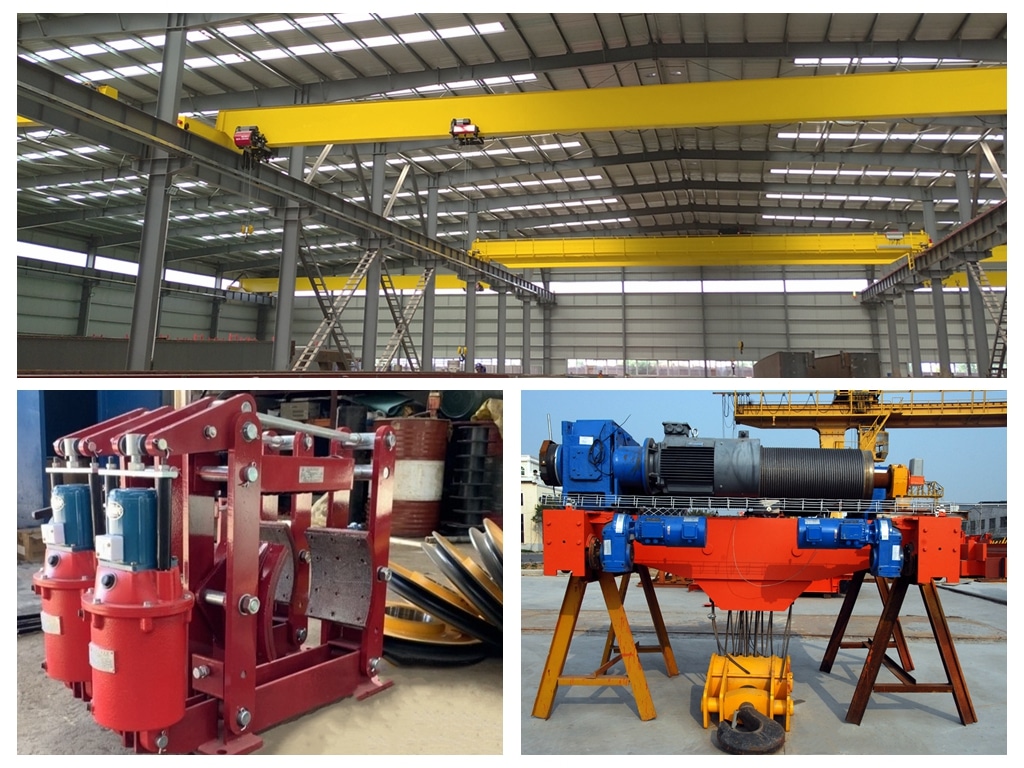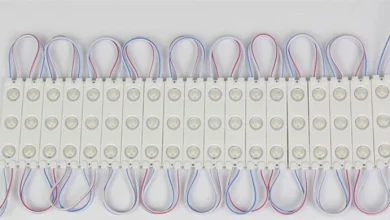Bridge cranes are vital pieces of equipment used in industries that involve the lifting and movement of heavy materials. These cranes, often referred to as overhead or gantry cranes, are designed to operate in a wide range of environments—from factories to construction sites, ports, and warehouses. With their capacity to lift and transport large and heavy loads across short to long distances, bridge crane offer unparalleled efficiency and safety for heavy lifting operations.
In this article, we will explore the key features of bridge cranes and their various applications in heavy lifting. Understanding how these cranes work and their benefits will help businesses choose the right equipment for their specific needs and improve their overall operational efficiency.
1. What is a Bridge Crane?
A bridge crane, also known as an overhead crane or a traveling crane, consists of a hoist, bridge, trolley, and supporting structure. It is designed to lift, move, and lower materials from one point to another within a designated area. Unlike traditional cranes, which are often stationary or mobile, bridge cranes are designed to move along a set of rails or tracks, often positioned above the workspace, hence the term “overhead.”
Key Components of a Bridge Crane:
-
Bridge: The horizontal beam that spans the workspace and moves along the rails. The bridge provides the structure for the crane to move and carry the load.
-
Trolley: The mechanism that moves the hoist along the length of the bridge. The trolley is responsible for positioning the load along the bridge.
-
Hoist: The lifting device that raises and lowers the load. The hoist is usually powered by an electric motor, though manual hoists are also available for lighter loads.
-
Rails or Tracks: The tracks along which the bridge moves, providing the necessary space for horizontal movement within the crane’s operating area.
-
Supporting Structure: This is the foundation or framework that holds the entire crane system in place, often mounted on the building’s ceiling or on large columns.
bridge crane are available in a variety of configurations to suit different lifting needs and facility layouts. Some cranes are designed for light loads and small spaces, while others can handle extremely heavy materials in large, open environments.
2. Key Features of Bridge Cranes
Bridge cranes are designed to offer a combination of strength, precision, and flexibility, which makes them a preferred solution for heavy lifting tasks. Here are some of the key features that define bridge cranes:
1. High Load Capacity
One of the main advantages of bridge cranes is their ability to lift very heavy loads. Depending on the design and specifications, a bridge crane can handle loads ranging from a few tons to hundreds of tons. This makes them ideal for industries like manufacturing, construction, and shipping, where lifting and moving massive materials is required. The load capacity is determined by the crane’s design, including the strength of the hoist, trolley, and bridge structure.
2. Precision and Control
Bridge cranes offer precise control over the movement of materials. The hoist can be adjusted to lift loads with exactness, allowing operators to place materials with high accuracy. The ability to control the movement of heavy materials precisely reduces the risk of damage and increases the overall safety of the operation. This precision is especially useful when handling delicate or sensitive equipment.
3. Space-Saving Design
Bridge cranes are typically suspended from the ceiling, which allows them to operate without taking up valuable floor space. This is especially beneficial in environments where space is limited and every inch counts, such as warehouses, factories, and ports. By moving along tracks positioned high above the ground, bridge cranes help free up valuable space below for other tasks or equipment, optimizing the facility layout.
4. Versatility
Bridge cranes can be adapted to various industries and applications. They are highly customizable, with different hoist options, track lengths, and load capacities to suit specific lifting needs. Additionally, the cranes can be designed for different environments, including harsh or hazardous locations where specialized equipment is required, such as chemical plants or offshore drilling sites.
5. Durability and Longevity
Bridge cranes are built to last. Constructed from high-quality materials, these cranes can withstand the demands of heavy lifting over long periods of time. Regular maintenance and inspections ensure that bridge cranes continue to operate efficiently and safely. The durability of these cranes makes them a long-term investment for businesses in need of heavy lifting equipment.
3. Applications of Bridge Cranes in Heavy Lifting
Bridge cranes are used in various industries to handle materials, components, and machinery. Their ability to lift and move heavy loads across short distances with precision and safety makes them a versatile solution for a wide range of applications.
1. Manufacturing and Assembly
In manufacturing plants, bridge cranes are used to move raw materials, components, and finished products. These cranes help improve production efficiency by ensuring that materials are delivered to the right workstation at the right time. For example, in the automotive industry, bridge cranes are used to move large metal components, engines, and body parts throughout the assembly line. The ability to lift and transport large parts quickly reduces downtime and ensures the manufacturing process runs smoothly.
2. Construction Sites
On construction sites, bridge cranes are used to move building materials such as steel beams, concrete blocks, and heavy machinery. Their high load capacities and precision make them essential for lifting materials into place on high-rise buildings, bridges, and other large structures. Additionally, these cranes can be used to lift heavy equipment, such as generators and scaffolding, to higher levels on construction projects.
3. Shipyards and Ports
In shipyards, bridge cranes are crucial for lifting and moving large components of ships, such as hull sections, engines, and propellers. The ability to lift and move massive parts with precision is vital for the efficient construction and repair of ships. Similarly, in ports, bridge cranes are used to move containers, cargo, and heavy equipment from ships to trucks or storage areas, facilitating the smooth operation of the port’s logistics system.
4. Power Plants and Heavy Industry
Power plants, steel mills, and other heavy industrial facilities often rely on bridge cranes for lifting and moving massive components such as turbines, generators, and steel beams. These cranes are typically designed to handle the demanding conditions found in heavy industry, including high temperatures, vibrations, and heavy-duty lifting tasks. The ability to move large, heavy equipment is crucial for ensuring smooth operations and preventing costly downtime in industrial settings.
5. Warehousing and Distribution
In warehouses and distribution centers, bridge cranes help move heavy goods from storage to packing or shipping areas. They can lift pallets of goods, large machinery, or other heavy items, allowing workers to transport products quickly and efficiently. With their ability to move products over long distances, bridge cranes help improve warehouse throughput and ensure that orders are fulfilled accurately and on time.
4. Advantages of Using Bridge Cranes
The benefits of using bridge cranes in heavy lifting operations are clear. Here are some key advantages that bridge cranes bring to industrial environments:
1. Increased Efficiency
Bridge cranes allow for faster material handling compared to manual lifting or other equipment like forklifts. This increased efficiency improves overall productivity in the workplace, helping companies meet deadlines and reduce labor costs.
2. Improved Safety
The use of bridge cranes reduces the need for manual lifting, which can cause injuries like strains and sprains. Additionally, these cranes are designed with safety features such as load limiters, emergency stops, and fail-safe mechanisms to ensure the safety of operators and workers in the vicinity.
3. Cost-Effectiveness
While the initial investment in a bridge crane can be significant, the long-term benefits outweigh the costs. The durability, efficiency, and ability to lift heavy loads with precision help reduce downtime, prevent accidents, and minimize maintenance costs.
4. Flexibility and Customization
Bridge cranes can be tailored to meet the specific needs of a facility. Whether you need a crane that can handle extremely heavy loads or one designed for use in a specialized environment, bridge cranes can be customized to suit a wide variety of applications.
5. Conclusion
Bridge cranes are essential tools in industries that require the lifting and movement of heavy materials. With their high load capacity, precise control, and space-saving design, these cranes offer numerous benefits in terms of efficiency, safety, and productivity. Whether in manufacturing, construction, shipbuilding, or warehousing, bridge cranes provide a reliable and versatile solution for heavy lifting tasks.
By understanding the key features and applications of bridge cranes, businesses can select the right crane for their needs, ensuring that their operations run smoothly, safely, and efficiently. Investing in bridge cranes is not only a smart choice for heavy lifting but also a long-term strategy for improving operational performance and achieving business goals.




